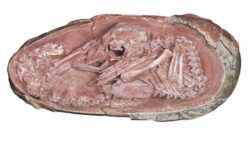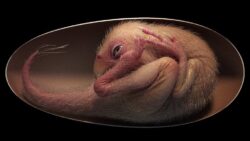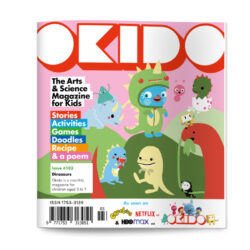Meet baby dinosaur Yingliang, the 66 million year old embryo.
Did you hear about the recent discovery of a baby dinosaur? A perfectly preserved dinosaur embryo was discovered in Ganzhou (southern China), as recently as December 2021. Researcher Dr Fion Waisum Ma said it is "the best dinosaur embryo ever found in history".
The baby dino has been affectionately named Baby Yingliang and is estimated to be at least 66 million years old. Researchers said the egg was probably preserved by a sudden mudslide that buried it, protecting it from scavengers.
The really interesting thing, though, is that it provides more insight into the link between dinosaurs and modern birds. How, you ask? Well, the fossil shows baby Yingliang in a curled position known as "tucking", something a bird does in the egg not long before it hatches. "This indicates that such behaviour in modern birds first evolved and originated among their dinosaur ancestors," Dr Ma told the AFP news agency.

Researchers believe it's an oviraptorosaur (meaning "egg thief lizards"), which are feathered dinosaurs that lived in what is now Asia and North America during the Late Cretaceous period - between 100 million to 66 million years ago.

FUN FACT
The egg was actually uncovered in 2000, but was then put into storage for 10 years. It was only when construction work began on the museum and old fossils were being sorted through that researchers turned their attention to the egg, which they suspected was holding an embryo inside. Read another dinosaur story: the crocodile who ate a juvenile dinosaur for its last meal, or the evidence that dinosaurs caught colds too.
We feature baby dinosaur Yingliang in our February issue all about DINOSAURS, sharing this incredible discovery with our community of young scientists so they can learn about the extraordinary similarities between a prehistoric species and birds as they are today. 
Because when you need to know, go to OKIDO!